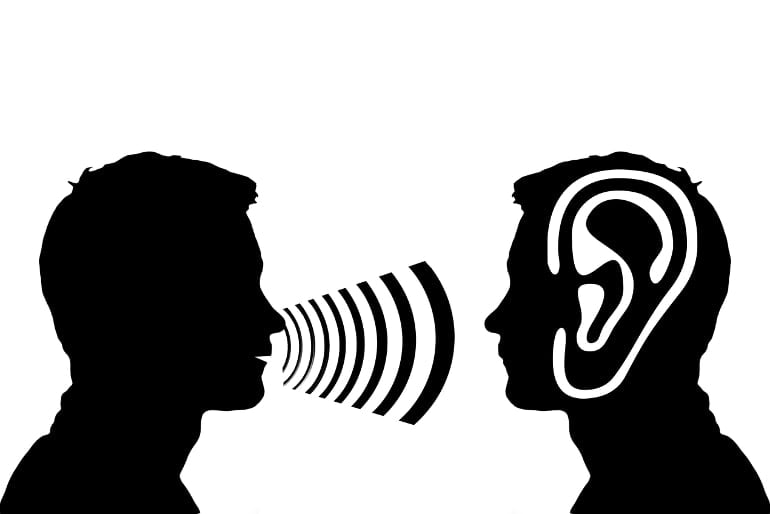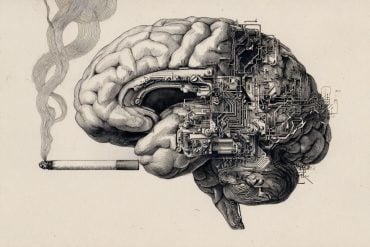Summary: A new study casts old theories about hearing into doubt. Researchers found many cells in the inner ear react simultaneously to low-frequency sounds. This makes it easier for us to hear low-frequency sounds as the brain is able to receive input from many sensory cells at the same time.
Source: Linkoping University
The way in which we experience music and speech differs from what has until now been believed. This is the conclusion of a study by researchers at Linköping University, Sweden, and the Oregon Health and Science University, USA.
The results have been published in Science Advances, and may make it possible to design better cochlear implants.
We are social creatures. The sound of other people’s voices is important for us, and our hearing is directed at experiencing and distinguishing voices and human speech. Sound that arrives at the outer ear is carried by the ear drum to the spiral-shaped inner ear, also known as the cochlea.
The sensory cells of hearing, outer and inner hair cells, are located in the cochlea. The sound waves cause the “hairs” of the inner hair cells to bend, sending a signal through the nerves to the brain, which interprets the sound we hear.
For the past 100 years, we have believed that each sensory cell has its own “optimal frequency” (a measure of the number of sound waves per second). The hair cell responds most strongly to this frequency.
This idea means that a sensory cell with an optimal frequency of 1000 Hz would respond much less strongly to sounds with a frequency slightly lower or higher. It has also been assumed that all parts of the cochlea work in the same way.
Now, however, a research team has discovered that this is not the case for sensory cells that process sound with frequencies under 1000 Hz, considered to be low-frequency sound. The vowel sounds in human speech lie in this area.
“Our study shows that many cells in the inner ear react simultaneously to low-frequency sound. We believe that this makes it easier to experience low-frequency sounds than would otherwise be the case, since the brain receives information from many sensory cells at the same time,” says Anders Fridberger, professor in the Department of Biomedical and Clinical Sciences at Linköping University.
The scientists believe that this construction of our hearing system makes it more robust. If some sensory cells are damaged, many others remain that can send nerve impulses to the brain.
It is not only the vowel sounds of human speech that lie in the low-frequency region: many of the sounds that go to make up music also lie here. Middle C on a piano, for example, has a frequency of 262 Hz.

These results may eventually be significant for people with severe hearing impairments. The most successful treatment currently available in such cases is a cochlear implant, in which electrodes are placed into the cochlea.
“The design of current cochlear implants is based on the assumption that each electrode should only give nerve stimulation at certain frequencies, in a way that tries to copy what was believed about the function of our hearing system.
“We suggest that changing the stimulation method at low frequencies will be more similar to the natural stimulation, and the hearing experience of the user should in this way be improved,” says Anders Fridberger.
The researchers now plan to examine how their new knowledge can be applied in practice. One of the projects they are investigating concerns new methods to stimulate the low-frequency parts of the cochlea.
These results come from experiments on the cochlea of guinea pigs, whose hearing in the low-frequency region is similar to that of humans.
Funding: This work was funded by U.S. National Institutes of Health and Swedish Research Council.
About this auditory neuroscience research news
Author: Karin Söderlund Leifler
Source: Linkoping University
Contact: Karin Söderlund Leifler – Linkoping University
Image: The image is in the public domain
Original Research: Open access.
“Best frequencies and temporal delays are similar across the low-frequency regions of the guinea pig cochlea” by Anders Fridberger et al. Science Advances
Abstract
Best frequencies and temporal delays are similar across the low-frequency regions of the guinea pig cochlea
The cochlea maps tones with different frequencies to distinct anatomical locations. For instance, a faint 5000-hertz tone produces brisk responses at a place approximately 8 millimeters into the 18-millimeter-long guinea pig cochlea, but little response elsewhere.
This place code pervades the auditory pathways, where neurons have “best frequencies” determined by their connections to the sensory cells in the hearing organ. However, frequency selectivity in cochlear regions encoding low-frequency sounds has not been systematically studied.
Here, we show that low-frequency hearing works according to a unique principle that does not involve a place code. Instead, sound-evoked responses and temporal delays are similar across the low-frequency regions of the cochlea.
These findings are a break from theories considered proven for 100 years and have broad implications for understanding information processing in the brainstem and cortex and for optimizing the stimulus delivery in auditory implants.






